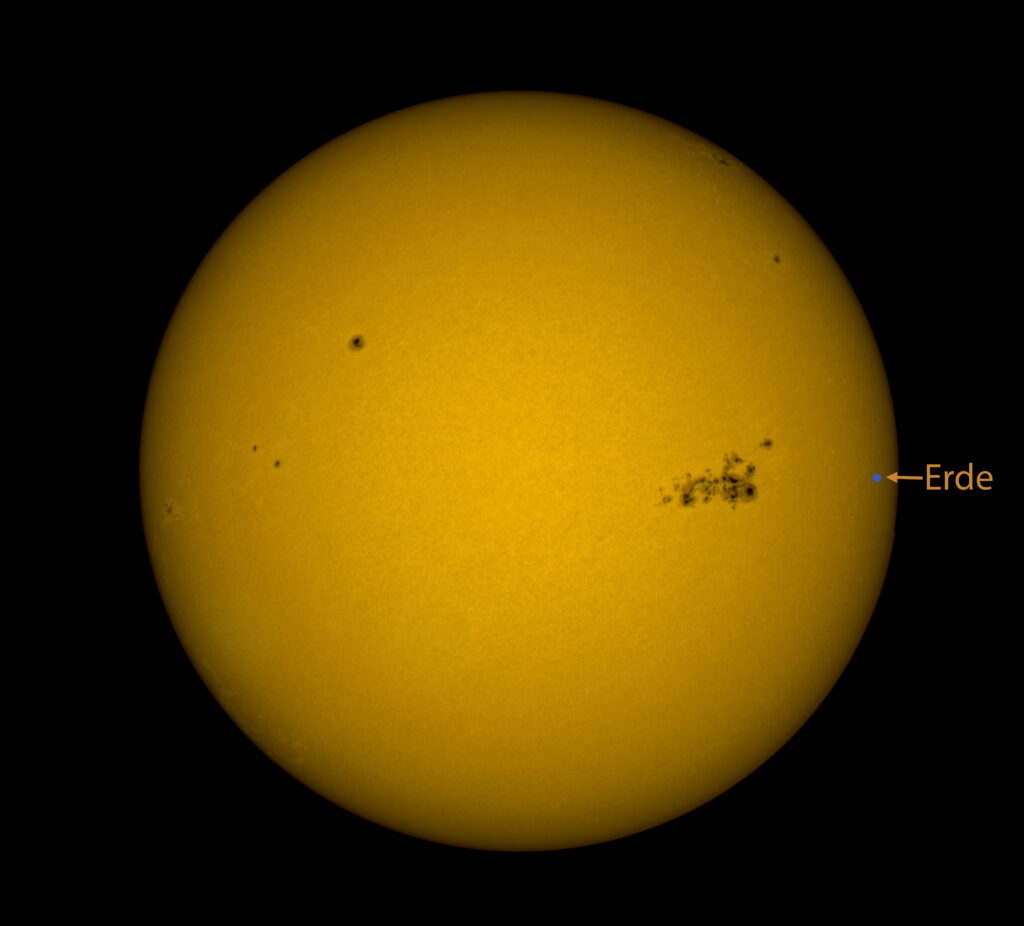Wenn es in der Nacht bewölkt ist, könnte am Tag doch vielleicht mal die Sonne für eine Stunde sichtbar sein. Dann ist Astrofotografie auch am Tag möglich.
Heute zeige ich einen ersten Versuch unserem Stern fotografisch nahe zu kommen. Zu erkennen sind insbesondere Sonnenflecken.
Diese dunkleren Stellen auf der Sonnenoberfläche, sind kühler als die Umgebung und strahlen dadurch weniger Licht ab, als die Umgebung. Ursache dafür sind starke Magnetfelder, die den Wärmetransport vom Sonneninnern zur Oberfläche behindern.
Die derzeit große Anzahl der Sonnenflecken zeigt eine hohe Sonnenaktivität an, die ungefähr in einem 11-Jahres-Rhythmus schwankt.
Wir nähern uns dem Höhepunkt des aktuellen Sonnenfleckenzyklus, dies zeigt sich auch darin, dass häufiger als sonst Polarlichter bis in mittlere Regionen der Erde zu sehen sind. So waren Polarlichter fotografisch und schwach visuell auch in Deutschland schon mehrfach in diesem Jahr sichtbar.
Schöne Grüße
Hans
If it is cloudy at night, the sun might be visible for an hour during the day. Then astrophotography is also possible during the day. Today I’m showing a first attempt to get close to our star photographically. Sunspots in particular are to be recognized. These darker areas on the sun’s surface are cooler than the surroundings and therefore emit less light than the surroundings. This is caused by strong magnetic fields that hinder the transport of heat from the interior of the sun to the surface. The currently large number of sunspots indicates high solar activity, which fluctuates approximately every 11 years. We are approaching the peak of the current sunspot cycle, which is also reflected in the fact that northern lights can be seen in central regions of the Earth more often than usual. Northern lights have been photographically and faintly visible in Germany several times this year.
Kind regards
Hans
